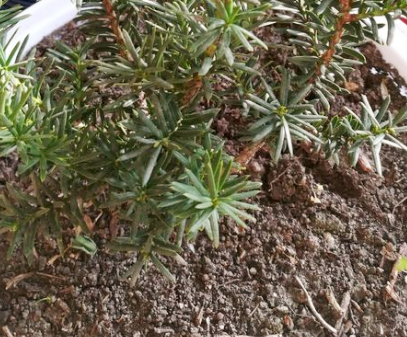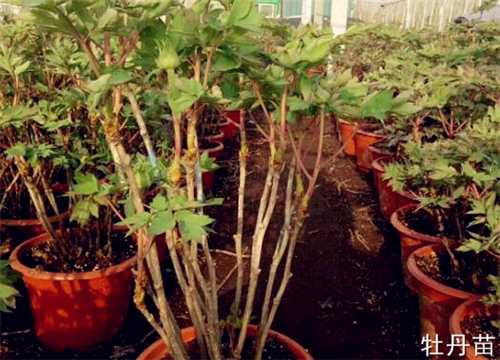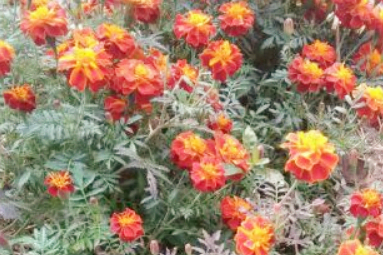Yew breeding methods and precautions known as "plant gold" are introduced!
The yew may not be very familiar to many people. In fact, the yew is a very precious ornamental plant, and it is also an ancient tree species left over from the Quaternary glacier, so it has the title of "plant gold". As a treasure in flower culture, many people like it and want to cultivate it, so the editor will introduce to you the cultivation methods and matters needing attention of the yew.
I. Culture methods of Taxus mairei
1. Soil
Taxus likes to survive in humus-rich soil with loose water, fertilizer and good permeability, which can be mixed with peat soil or perlite, but it is not suitable for clay with poor air permeability and poor water retention.
2. Lighting
The difference between yew and other plants is that it likes to live in a cool environment, so it can't be placed in direct sunlight when breeding, so as not to cause its water evaporation to cause dehydration of branches and leaves and dry leaves. But if there is no light, it will not be conducive to the growth of the yew, so it can be shaded properly. In the hot summer, the yew can be placed in the living room and corners, and then put to the windowsill in the evening.
3. Fertilization
During the cultivation of yew, it is a key step to apply 0.2 jin of organic fertilizer and 0.02 jin of compound fertilizer per plant, and some farm manure and cake fertilizer can also be added. During fertilization, it should be sprinkled along the pot wall as far as possible, but not near the root of the yew. In addition, the newly bought yew bonsai generally has some nutritive soil, so it can wait 2-3 months to apply fertilizer.

4. Watering
Judging whether the yew should be watered can observe whether the leaves are tired and sagging, or listen to the sound by knocking on the pot. if the sound of knocking on the basin is empty, the soil is dry, then it is time to water. In general, the yew placed outdoors is watered every half a month, and if it is placed indoors, it is watered for 20-25 days to keep the soil moisture at about 40%.
5. Trim
In order to reduce the nutrient consumption of branches and leaves and quickly restore root growth and beauty during the growth period of Taxus mairei, bonsai needs to be pruned. The specific operation is that when the lower branches grow too dense or dry yellow leaves fall off, part of the overdense branches can be trimmed, and the shape can be cut into umbrella type, tower shape or round shape.
6. Change the basin
When the seedlings of the yew culture will gradually grow up for a year or so, and the root system will gradually develop, it is necessary to transplant and change the basin. When changing the basin, you can first break the old basin but be careful not to damage the original soil ball. Then move it into the new basin to water and fix the roots to make its roots closely combine with the soil. In addition, if the yew can not keep up with the root and branch and leaf nutrient supply when the leaves curl and dry, it can be solved by pruning.
Matters needing attention in cultivating Taxus chinensis
1. If yellowing or diseases and insect pests occur during the yew culture, the control measures can be irrigated or sprayed with methyl topiramate or potassium dihydrogen phosphate. It should be noted that during the rainy season, the yew, especially the young trees, are prone to root rot and root rot. At this time, it is necessary to spray and maintain with dimethazone, and Bordeaux solution can be used to control the leaf blight and red blight in the high temperature and dry season.
2. Although the yew does not have high requirements for the growth environment, it can not be exposed to the sun in summer, nor can it blow into the air conditioner, nor can it be close to the heating in winter, nor can it throw sundries such as cigarette butts and tea into the basin. These behaviors will be disadvantageous to the growth of the yew.
3. The flowerpot used during the culture of yew can be slightly larger, and several holes can be made at the bottom of the basin to enhance its water permeability and air permeability. if possible, purple sand pot is the best, which is beneficial to its growth.
4. During the cultivation of yew, it should be placed in a place with good ventilation. If the room is closed and not ventilated, or if planted in the tuyere, it will cause the yew to curl and fall leaves due to water evaporation.
5. When watering the yew, it is best to add acidic nutrients or use 2/1000 ferrous sulfate solution to spray leaves or irrigate potted soil. If it is irrigated with alkaline water for a long time, it is easy to cause the leaves to turn yellow or even fall off.
Summary: the above is about the yew culture methods and matters needing attention in the process of the relevant introduction, I hope to help friends in need!
Time: 2019-03-13 Click:
- Prev

How much is the price of peony seedlings of "famous Chinese flowers"? 6 steps of planting method to share!
There is no need to say more about peonies! I believe everyone knows that peony is one of the top ten famous flowers in China, which has been cultivated in China for thousands of years. What is particularly commendable is that the color of peony is not the same color, but colorful, with high ornamental value.
- Next

Introduction of planting methods and matters needing attention of peacock grass (small marigold)!
Malachite grass, also known as small marigold, red yellow grass, etc., is an annual herb of the genus Asteraceae. Because of its bright petals, high ornamental value, strong adaptability and easy feeding, it is very popular.
Related
- Fuxing push coffee new agricultural production and marketing class: lack of small-scale processing plants
- Jujube rice field leisure farm deep ploughing Yilan for five years to create a space for organic food and play
- Nongyu Farm-A trial of organic papaya for brave women with advanced technology
- Four points for attention in the prevention and control of diseases and insect pests of edible fungi
- How to add nutrient solution to Edible Fungi
- Is there any good way to control edible fungus mites?
- Open Inoculation Technology of Edible Fungi
- Is there any clever way to use fertilizer for edible fungus in winter?
- What agents are used to kill the pathogens of edible fungi in the mushroom shed?
- Rapid drying of Edible Fungi

